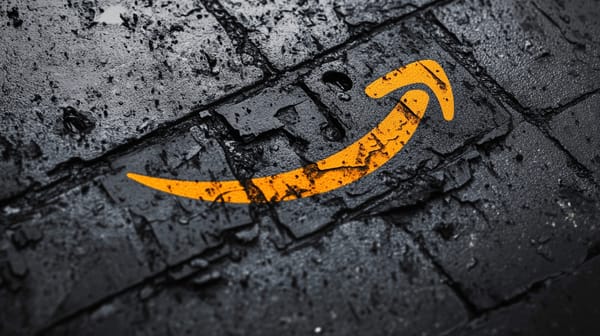XRP Adoption Among Fintech Apps Compared to Legacy Bank Competitors
The world of digital currencies and blockchain technology is evolving rapidly, offering new potential solutions for fast, low-cost cross-border payments. One such currency that has gained traction specifically among fintech companies is XRP, the cryptocurrency designed to facilitate transactions on the Ripple network. However, XRP faces competition from the legacy banking system and its traditional cross-border payment rails. This article examines the current level of XRP adoption among fintech apps compared to the old guard of international banks.
The Promise of XRP for Fintech
Fintech startups have been drawn to XRP for its speed, cost-efficiency, and scalability compared to alternatives like Bitcoin or Ethereum. Settlement times on the XRP Ledger typically take 3-5 seconds at negligible cost, while Bitcoin transactions can take over an hour and have fluctuating fees. The XRP Ledger can also handle 1500 transactions per second, dwarfing Bitcoin's 7 TPS.
For fintechs focused on remittances, micropayments, or other cross-border applications, these XRP benefits are highly attractive. SendFriend, MoneyGram, and Bitso are just some of the fintechs leveraging XRP to provide faster and cheaper payments, especially in key remittance corridors to Latin America and the Philippines.
Additionally, Ripple's suite of XRP-powered products like RippleNet and ODL (On-Demand Liquidity) allow fintechs to avoid pre-funding accounts in destination currencies. This liberates capital and reduces operational costs.
Continued Bank Dominance in Cross-Border Payments
While XRP penetration is growing among fintech apps, the vast majority of global cross-border payments still flow through the legacy correspondent banking system. Swift, the industry-owned cooperative, continues to dominate this space with over 11,000 member institutions.
The top remittance corridors remain firmly in the grip of major banks and money transfer operators (MTOs) like Western Union and MoneyGram. For example, in the Philippines, the world's third largest remittance destination, banks process over 60% of inward remittances. XRP-powered apps have made in-roads but capture only a fraction of flows.
Many major banks are also reluctant to adopt digital assets due to perceived risk, lack of regulation, and inability to leverage existing relationships. Persistent volatility in the crypto markets exacerbates these concerns.
Compliance Benefits Give Fintechs an Opening
While banks cling to old payment rails, their lack of agility and innovation have opened the door for fintechs. Smaller fintech apps are more adaptable, building XRP integration directly into their technology stacks from the outset. Their lean operations also allow them to capture customers through better exchange rates and fees.
Fintechs' emphasis on regulatory compliance is another advantage. From KYC procedures to licensure, fintechs understand this is the cost of competing with and hoping to someday partner with banks. Ripple has also prioritized compliance every step of the way, giving fintech users confidence in XRP.
As one industry insider told me:
"Banks think they're too big to fail when it comes to cross-border payments. But their disregard for customers and lack of technological evolution is opening up opportunities for fintech innovators to offer something better aligned with what people expect in 2023."
Can XRP Break Through the Bank Stronghold?
Despite current bank dominance, the long-term trajectory favors further XRP adoption in fintech for cross-border transactions. Here are some of the key factors:
- Cost Savings: As more data emerges on the cost-savings of XRP for liquidity management and settlement, fintechs will flock to RippleNet for its efficiency.
- Proven Use Cases: Ripple now counts over 350 customers globally, including financial institutions and payment providers. These production use cases validate XRP as mature technology ready for broader deployment.
- Regulatory Clarity: As regulators like the SEC provide more guidance around digital assets, it will alleviate institutional concerns around adopting XRP and drive further adoption.
- Network Effects: As the XRP Ledger becomes more valuable with greater transaction volume across corridors, its appeal for new fintech entrants increases.
In Summary
While legacy banks still dominate cross-border payments, fintech innovators are leading the way in XRP integration. By leveraging XRP's speed, cost, and scalability benefits, fintech apps can offer cheaper, faster remittances and money transfers compared to old payment rails. However, banks remain reluctant to adopt digital assets due to perceived risk and inability to leverage existing relationships. Persistent crypto volatility also deters big institutions. But fintechs' emphasis on compliance and serving the underbanked give them an opportunity to capture market share. As more data emerges on XRP's cost-savings and regulations become clearer, we can expect XRP adoption to accelerate among fintech companies aiming to transform cross-border transactions.
Should fintech companies collaborate with banks on blockchain payments?
Fintech disruptors often start out competing fiercely with established banks. However, fintech-bank collaboration may actually be the key to widespread blockchain adoption for payments and financial services. There are compelling benefits for both sides, if they can overcome their initial reluctance.
For banks, fintech partners can provide much-needed tech expertise and agility in deploying blockchain solutions. Fintechs gain access to bank customers, assets, compliance infrastructure, and trust. Joint lobbying on regulatory issues is also more impactful. We've already seen promising collaborations like Goldman Sachs & Circle on the USDC stablecoin, showing how fintechs and banks can complement each other. With openness to partnership on both sides, banks and fintechs can accelerate innovation in blockchain payments to better serve their customers.
Will XRP ever be the global standard for cross-border payments?
As a bridge currency and liquidity solution, XRP has unique properties that make it a promising global payment standard. But it faces some major obstacles to mainstream adoption.
On the positive side, XRP offers fast settlement, lower costs, increased liquidity options and clear ROI for payment providers. Major players like MoneyGram and SBI Remit are already using Ripple's XRP-powered ODL for key payment corridors.
However, volatility issues remain a barrier for larger adoption. And as a private company, some argue Ripple's control over the XRP Ledger is excessive. Persistent questions around XRP's security classification also cause uncertainty for US firms.
Realistically, XRP may become a global standard incrementally by proving itself in high volume corridors like the Philippines. Emerging central bank digital currencies could also utilize XRP as a neutral settlement layer. But it faces competition from both private stablecoins and public digital currencies.
In the end, XRP will likely play a major role in the future of global payments but not achieve complete "standard" status. The diverse ecosystem will need interoperability, with XRP serving as a key messaging and liquidity layer but not the only option. Regardless, Ripple's innovative vision and application of XRP make it a pivotal blockchain payment solution to watch going forward.




